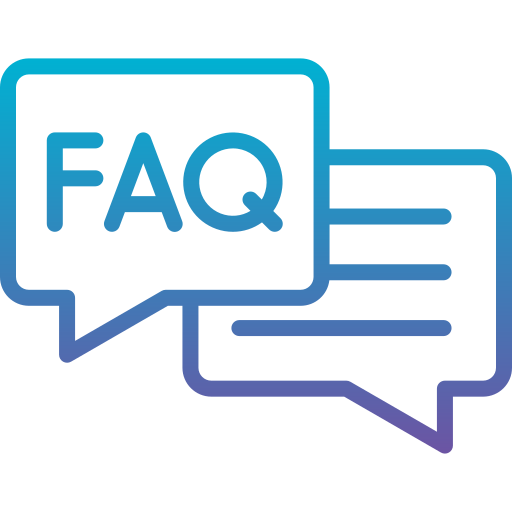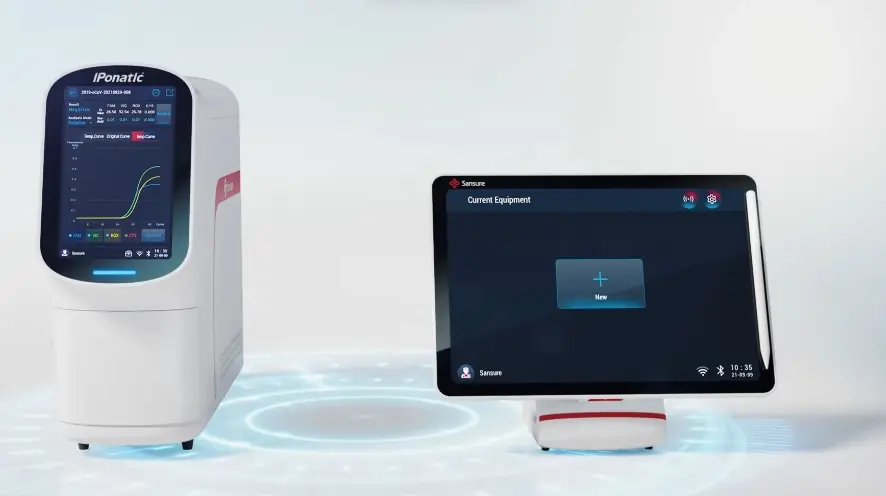
What key elements should my guided tutorial include for success?
Successful guided tutorials incorporate a clear objective, concise script, engaging visuals, professional voiceover, and a strong call to action.
How can I determine the optimal length for my instructional video?
Instructional video length depends on content complexity. Simple tasks benefit from shorter videos (under 2 minutes), while in-depth explanations require longer formats (3-5 minutes).
What common mistakes should I avoid when commissioning a product walkthrough video?
Avoid jargon, unclear visuals, and a lack of focus. Ensure the message is concise and easily understood by the target audience.
How can I ensure clarity in a demonstration video created for me?
Clarity in demonstrations comes from well-defined steps, close-up visuals, concise explanations, and professional voiceover.
Working with a video team, how can we make my training video visually engaging?
Create visually engaging training videos using dynamic visuals, varied camera angles, motion graphics, and a clear, concise narrative.
How can my branding be subtly incorporated into a how-to video?
Subtly incorporate branding using color palettes, background elements, and brief, tasteful logo placements.
What scripting best practices should my video production team follow for a compelling educational video?
Effective scripting includes a clear introduction, concise steps, a logical flow, and a strong call to action.
What role does storytelling play in effective instructional videos?
Storytelling connects tutorials to real-world scenarios, making them relatable, memorable, and emotionally resonant.
What call to action should a professionally produced video guide include?
A strong call to action encourages viewers to take the next step – visiting a website, making a purchase, or signing up.
How are other businesses using professionally made explainer videos in their marketing?
Explainer videos are used for product demos, onboarding, training, and marketing campaigns across various industries.
What on-screen talent or voiceover best suits a guided demonstration video?
The ideal on-screen talent or voiceover depends on the video's tone and target audience. A friendly, authoritative voice is generally effective.
How can existing content be repurposed into engaging video tutorials by a production team?
Repurpose existing content (blog posts, manuals, presentations) into engaging video tutorials by adding visuals, scripting, and voiceover.
What pre-production steps are crucial for a smooth guided tutorial video creation process?
Crucial pre-production steps: defining objectives, target audience, scripting, storyboarding, and securing talent/equipment.
How can a video production company create a series of tutorials to guide users through a complex process?
Create tutorial series by breaking down complex processes into manageable steps, each covered in a separate video.
How can my step-by-step video best support my specific business objectives?
Align step-by-step videos with business objectives, whether it's product understanding, customer engagement, or conversions. Fixed-fee pricing for a 60-second video ranges from $1000-$6000, depending on complexity. Turnaround time is typically 3-8 weeks.
Mastering Cognitive Principles for Video Learning
Creating an effective Guided Tutorial Video involves understanding more than just the steps; it requires tapping into how viewers actually learn. Makers leverage cognitive principles, understanding how minds process information transforming passive viewing active sticky learning experiences. Makers respect working memory limits dual processing channels.
Understanding cognitive load helps creators minimize distractions extraneous load managing inherent complexity intrinsic load. Makers boost germane load mental effort leading learning. Applying the multimedia principle ensures visuals narration work together using both audio visual channels effectively without overwhelming learners. Techniques signaling using visual cues guide attention key information reducing search time mental strain. Segmenting breaks content digestible chunks empowering learners control preventing overwhelm. Weeding nonessential details ensures focus core message. Pacing delivery carefully balances speed comprehension avoiding frustration.
Strategic use signaling directs learner focus making crucial details unmissable.
Segmenting complex topics shorter bursts aligns microlearning principles improving knowledge retention.
Incorporating interaction points prompts active processing reinforcing understanding.
Analyzing viewer data like drop off points reveals where cognitive bottlenecks might occur guiding optimization.
Applying cognitive insights creators craft video speaking directly how brains learn best increasing engagement.
Why Advids for Guided Tutorial Video?
At Advids, we specialize in crafting high-quality, original guided tutorial video s that deliver exceptional results and help you achieve your business goals. We combine creative storytelling, cutting-edge technology, and a proven track record to transform your vision into compelling and effective tutorials.
Unlocking the Power of Guided Tutorial Video:
Customized Guided Tutorial Video Solutions: We tailor each project, whether it's a software demonstration, product walkthrough, or training module, to perfectly reflect your brand, style, and target audience.
Creative Storytelling Through Animation & Live Action: Our skilled team crafts captivating narratives that engage your viewers and simplify complex information , making learning easy and enjoyable.
Cutting-Edge Guided Tutorial Video Technology: We utilize the latest software and techniques, including screen recording , motion graphics, and interactive elements, to create visually stunning and impactful tutorials.
Experience and Expertise You Can Rely On:
12+ Years of Proven Success: With over 3400 clients served, we have a deep understanding of what makes a Guided Tutorial Video truly effective.
Trusted by Industry Leaders: Brands like Razorpay, Ola, Mercedes, the United Nations, Continental, and Mercer trust us to create engaging and informative tutorials for their audiences.
Client Satisfaction Guaranteed: Our commitment to excellence is reflected in over 109 five-star Google reviews, showcasing our talent, creativity, and dedication to client satisfaction.
A Collaborative Approach to Success:
Collaborative Process: We work closely with you throughout the entire process, from initial concept to final delivery, ensuring your vision is realized in the final tutorial.
Strategic Communication: We prioritize clear and open communication, understanding your needs, target audience, and brand identity to create truly impactful Guided Tutorial Videos.
275+ Successful Guided Tutorial Videos: We've produced over 275 successful Guided Tutorial Videos, demonstrating our expertise in this specialized area.
Ready to unlock the potential of Guided Tutorial Video for your business with the latest video design trends of 2024? Let Advids be your trusted partner in transforming your ideas into engaging and effective animated experiences.
Checkout some of the projects and work our team at Advids has been producing:
What is a Guided Tutorial Video?
A Guided Tutorial Video is a type of video that provides step-by-step instructions on how to use a product or service. These videos are often used to onboard new customers , provide customer support , or teach users how to perform specific tasks .
Guided tutorial videos are a versatile tool that can be used in a variety of ways. For example, they can be used to introduce new features to existing customers, provide troubleshooting tips , or demonstrate best practices for using a product. They can also be used to create engaging content that can be shared on social media or embedded on a website.
What do top Guided Tutorial Videos have in common?
Mastering guided tutorial videos requires a strategic approach focusing on clear goals, user understanding, and effective visual communication.
Clear Objectives: State learning goals upfront; focus on measurable outcomes.
- Ideal Learner Profile: Define user expertise; tailor explanations accordingly.
- logical step-by-step guide : Use clear headings, concise steps; ensure logical flow.
- Effective visual design : Use consistent branding; highlight key information.
- High-Quality Screen Recordings: Show, don't tell; use smooth transitions.
- Data-Driven Insights: Use A/B testing ; iterate based on user feedback.
- Simple, Direct Language: Use active voice; avoid complex sentence structures.
- Relevant Real-World Examples: Use relatable scenarios; show practical applications.
- Concise Summary: Summarize key points; offer resources for further learning.
- Progress Tracking: Use progress bars; provide clear completion indicators.
What makes Guided Tutorial Videos effective?
A fundamental aspect of Guided Tutorial Videos is their design to make complex information easy to understand. These videos break down complex processes into manageable steps, making it easier for viewers to follow along and learn.
Comprehensive Guided Tutorial Videos are driven by a clear understanding of the target audience. They are tailored to the specific needs and skill levels of the viewers, ensuring that the information is presented in a way that is both engaging and effective.
Methods for creating effective Guided Tutorial Videos often involve incorporating interactive elements, such as quizzes or polls, to encourage viewer participation and reinforce key concepts. This interactive approach helps to keep viewers engaged and ensures that they are actively learning from the content.
How long should your Guided Tutorial Video be?
Optimize guided tutorial video length for maximum impact by aligning video type, content, and viewer engagement.
Pre-production Considerations for Determining Video Length:
- What's the tutorial's core objective?
- Who is the intended learner?
- How many steps need visual explanation?
- How intuitive is the software?
- What platform dictates video length?
- Which visual style best suits the content?
- Does the tutorial need multiple segments?
Guided tutorial video length guide
| Guided Tutorial Types | Video Length | Use Case | Funnel |
|---|
| Screen Recording | 1-2 minutes | Concisely demonstrates software features, ideal for quick tutorials focusing on specific tasks Uses clear on-screen annotations for guidance | Awareness |
| Talking Head | 30-60 seconds | Provides a personal, engaging introduction to a topic or software, building trust and rapport | Consideration |
| Animated Screencast | 45-90 seconds | Explains complex processes visually, simplifying understanding through engaging animations, suitable for beginners | Consideration |
| Software Tutorial | 1-2 minutes | Covers multiple features in a structured manner, using a combination of screen recording and talking head segments for a comprehensive guide | Decision |
| Step-by-Step | 1.5-2 minutes | Guides users through a process with clear, concise steps, using visual aids and on-screen text for easy following, best for complex tasks | Conversion |
How to create Guided Tutorial Videos?
Crafting compelling guided tutorial videos requires a strategic approach. Mastering pre-production and production phases ensures your UI demo videos are effective and engaging, driving user understanding and adoption.
* Scripting - Use simple language, mirroring the UI's intuitive design. Focus on clear, concise instructions.- Storyboarding - Visual planning ensures a logical flow, mirroring the UI's user journey. Prevents disjointed explanations.
- Visual Design - A consistent style creates a professional look, enhancing UI clarity and user trust. Use branding effectively.
- Screen Recording - High-quality recordings showcase UI details, enhancing comprehension. Use clear annotations if needed.
- Video Editing - Smooth transitions and pacing maintain viewer engagement. Avoid jarring cuts or confusing edits.
- Interactive Elements - Quizzes and polls reinforce learning, increasing knowledge retention. Make them relevant to the UI.
- Call to Action - A clear CTA drives conversions, leading viewers to desired actions. Make it prominent and easy to find.
- Platform Optimization - Optimized videos reach wider audiences, maximizing viewership. Consider different screen sizes.
- Publishing - Strategic publishing maximizes reach, ensuring the video finds its target audience. Use relevant keywords.
The Importance of Clear Visuals in Tutorial Videos
After exploring the planning and production stages, let's delve into the critical role of clear visuals in tutorial videos. Effective visuals are more than just aesthetics; they're the backbone of user engagement, comprehension, and a positive learning experience. Think of effective tutorial video examples – they often use dynamic graphics and animations to captivate viewers. For instance, medical device tutorial video examples often leverage 3D animations to demonstrate complex assembly procedures, making them significantly easier for trainees to understand.
Visuals transform how we learn. They simplify complex information, making it digestible for everyone. This is especially important for onboarding videos , where first impressions are critical. compelling visuals can quickly engage new users and set the stage for a positive user experience . Imagine trying to explain a complex software feature with only text – overwhelming, right? Now, picture a concise animation demonstrating the same feature – instantly clearer.
By prioritizing clear, concise visuals, we empower users to learn efficiently and effectively. This translates to a better user experience , increased product adoption, and ultimately, a more successful tutorial video.
Measuring the Effectiveness of Tutorial Videos
Now we've covered video creation, let's explore how to measure their effectiveness . Imagine launching a new software feature and creating a tutorial video to onboard users. How do we know if it's successful? We analyze data. It's not just about views; it's about understanding how viewers interact with our content and whether it achieves its intended purpose. For instance, high completion rates for software demo videos indicate viewers find the content valuable. However, for isometric animation tutorial video examples, monitoring audience retention is crucial to ensure viewers aren't overwhelmed by complex visuals.
Effective measurement guides improvement. Analyzing metrics like click-through rates on call-to-actions helps optimize conversions . Direct feedback through surveys and polls provides valuable insights into user experience, especially for explainer videos tackling complex topics. A/B testing different versions of product tutorial video examples helps identify the most effective messaging and visuals.
- Track Engagement and Conversions: Measure likes, shares, comments, and click-through rates to gauge audience interest and the effectiveness of your call-to-actions.
- Analyze Viewing Behavior: Monitor video completion rate, play rate, and audience retention to identify areas for improvement and optimize content flow.
- Gather User Feedback: Conduct surveys, polls, and user interviews to gain valuable insights into user experience and identify areas of confusion.
- Monitor Post-Viewing Behavior: Track website traffic from video sources, user behavior on the UI after watching, and support tickets to assess the tutorial's impact on user understanding and task completion.
By analyzing these metrics, we gain a comprehensive understanding of our videos' performance. This data-driven approach allows us to continuously refine our content, ensuring our tutorials effectively engage viewers, enhance understanding, and ultimately, drive successful user adoption.
Using Data to Improve Tutorial Video Performance
Beyond compelling visuals, data unlocks deeper insights into tutorial video effectiveness. By understanding key metrics, we transform raw numbers into actionable strategies , optimizing our videos for maximum impact. Let's explore how data empowers us to refine our approach and create truly engaging learning experiences.
Data isn't just about numbers; it's about understanding our audience. It's about discovering what resonates, where viewers disengage, and how we can tailor our content to better meet their needs. For instance, analyzing top tutorial video examples reveals patterns in successful content, guiding our own creative process.
- Engagement Metrics: Dive into watch time and audience retention. High retention throughout an animated tutorial video example suggests viewers find the content captivating. Conversely, drop-off points highlight areas needing improvement, perhaps a complex concept requiring further simplification.
- call to action performance : Track click-through rates to gauge call-to-action effectiveness. strong CTRs in training videos indicate viewers are motivated to take the next step, whether it's exploring additional resources or applying their newfound knowledge.
- User Feedback and A/B Testing: Gather direct feedback through surveys and comments. A/B test thumbnails and titles to optimize for higher click-through rates, ensuring our knowledge base videos reach the widest possible audience.
- Holistic Data Analysis: Connect video performance with broader business goals. By correlating data with outcomes like increased product adoption or reduced support tickets, we demonstrate the tangible value of our tutorial video investments.
By embracing data-driven insights, we transform our approach to tutorial video creation. We move beyond guesswork and intuition, making informed decisions that lead to more engaging, effective, and impactful learning experiences for our audience.
Optimizing Tutorial Videos for Different Platforms
Optimizing tutorial videos for different platforms is crucial for maximizing reach and engagement. Creating compelling content isn't enough; we must tailor our approach to resonate with each platform's unique audience. Think about it – a highly technical software tutorial video example might thrive on LinkedIn, while a captivating 3d animation tutorial video example could be a hit on YouTube.
We've already covered the basics of video creation and measurement. Now, let's dive into platform-specific strategies. Imagine crafting the perfect tutorial animation, only to realize it's the wrong format for your target platform. Frustrating, right? We'll help you avoid that.
- Tailor video length to platform norms. Short, snappy videos might excel on TikTok, while in-depth instructional videos could perform better on YouTube. Consider your audience's attention span and the platform's typical content format.
- Optimize visuals for each platform. Vertical videos are ideal for Instagram Stories, while widescreen formats suit YouTube. Think about how viewers consume content on each platform and adjust accordingly.
- Customize content to resonate with platform-specific audiences. A tutorial on using professional software might find its home on LinkedIn, while a beginner's guide to 3d modeling could thrive on a platform like Skillshare.
- Leverage platform-specific features. Interactive elements like polls and Q&A sessions can boost engagement on platforms like Instagram and Facebook. Explore what each platform offers and integrate those features into your strategy.
By understanding these nuances, we can ensure our tutorial videos reach the right audience and achieve their intended purpose. From optimizing visuals to leveraging platform-specific features, a tailored approach is key to maximizing impact and creating truly engaging learning experiences.
Building a Brand Through Tutorial Videos
We've covered the technical aspects. Now, let's explore how tutorial videos can elevate your brand. These videos aren't just about explaining features; they're about building connections, fostering trust, and showcasing your brand's personality. Think of them as mini-commercials, subtly promoting your brand while providing valuable information. Need to explain complex software features? Explore explainer video examples for software to inspire your approach.
Imagine a viewer struggling with a new software. Your tutorial video guides them, solving their problem and leaving a positive impression. That's the power of brand building through tutorials.
- Craft compelling narratives. Don't just list features; tell a story. Show how your product solves real-world problems and makes life easier for your target audience. Looking for inspiration? Check out the best tutorial video examples online.
- Showcase your brand's personality. Infuse your videos with your brand's unique voice and style. Consistent visuals, music, and messaging create a cohesive brand experience.
- Highlight your unique value proposition . What makes your product or service stand out? Communicate this clearly in your videos, emphasizing the benefits for your viewers. High-quality product demo videos can effectively showcase your product's functionality and benefits.
- Encourage interaction and community. Respond to comments, ask questions, and foster a sense of community around your brand. Creating educational videos positions you as a thought leader in your industry.
By following these strategies, you can transform your tutorial videos into powerful brand-building tools . They become more than just instructions; they become engaging stories that connect with your audience and leave a lasting positive impression.
Author & Editor Bio
A video producer with a passion for creating compelling video narratives, Jai Ghosh brings a wealth of experience to his role. His background in Digital Journalism and over 11 years of freelance media consulting inform his approach to video production. For the past 7 years, he has been a vital part of the Advids team, honing his expertise in video content planning, creation, and strategy.
His collaborative approach ensures that he works closely with clients, from startups to enterprises, to understand their communication goals and deliver impactful video solutions. He thrives on transforming ideas into engaging videos, whether it's a product demo, an educational explainer, or a brand story.
An avid reader of modern marketing literature, he keeps his knowledge current. Among his favorite reads from 2024 are "Balls Out Marketing" by Peter Roesler, "Give to Grow" by Mo Bunnell and "For the Culture" by Marcus Collins. His results-driven approach ensures that video content resonates with audiences and helps businesses flourish.




